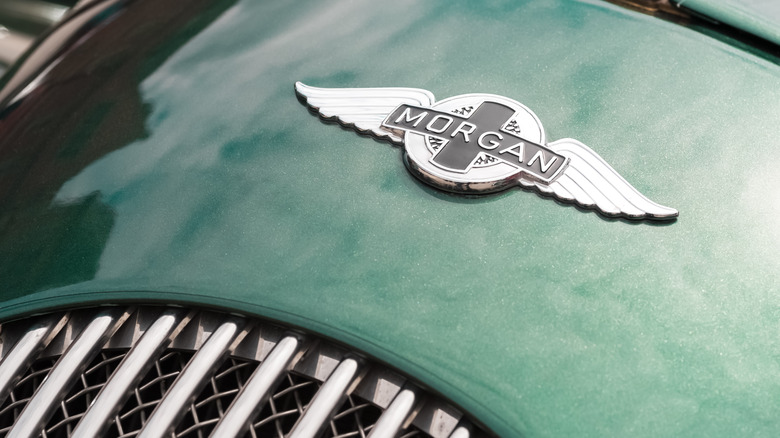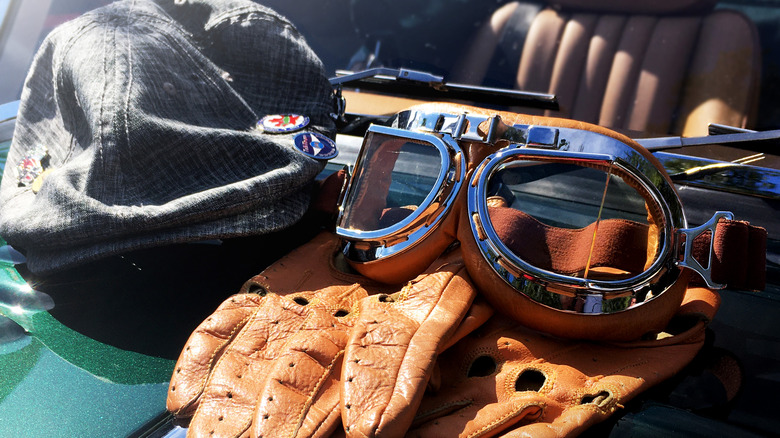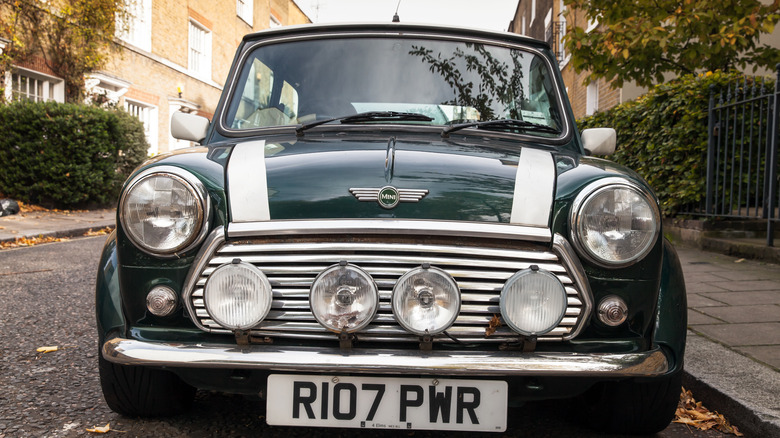Here's How British Racing Green Became The Most Legendary Color In Motorsports History
British racing green is an iconic color in the eyes of Formula 1 fans and car enthusiasts across the world. While red racers belong to the Italians and blue to the French, this deep shade of green is a source of pride for Britons competing in racing of all types.
Rupesh N. Bhambwani (on Medium's Formula One Forever) reports that the Association International des Automobiles Clubs Reconnus (AIACR) essentially appointed itself as the governing body for motor vehicle racing in 1906, and quickly pioneered the concept of a standard color concept to correspond with the driver's nationality. The Italian manufacturers and drivers had already laid claim to the brilliant flash of red, while Germany and France had been using white and blue, respectively. But the story of how British racing — a cadre of preeminent competitors across the world of motorsports — came late to the color selection party and ended up making what is now known as British racing green their own is a fascinating and particularly odd story.
Today, drivers do not have to hail from the same nation as their team's manufacturing processes, and teams themselves make use of these historic color schemes. Aston Martin (having returned to Formula 1 in 2021) is currently racing vehicles in the circuit with this paint job, and Lewis Hamilton's Mercedes cars have featured flashes of green for many years, perhaps in an effort to celebrate his British pride.
The shade originates from a setback more than a century ago
British racing green is a product of the imposition of national color patterns on racing vehicles, but the choice to shade the racers green came out of necessity rather than a cogent choice in the early days.
British racers were effectively barred from competition in the early 1900s due to a national speed limit on all British roads (set at just 12 miles per hour), according to Auto Week. This resulted in a generation of racing talent being held back by national restrictions on the practical application of the sport. In order to compete, racers from the UK had to travel over to mainland Europe, a continent lacking this significant roadway hindrance. As such, racers in Italy, Germany, and France had already made the trio of British colors their own.
In combination with the need to paint the cars a different color, the 1902 Gordon Bennett Cup was won by the British driver Selwyn Edge, ensuring that his home turf would play host for the 1903 race (via Into Kildare). Because of the British restriction on road speed (and colonial ownership of the whole island of Ireland that would last only a few more years), the race ended up settling in Athy, near Dublin. British racers, in deference to their cousins of the Isles and hosts for the home race, donned an even darker shade of emerald green, cementing this iconic tone in history.
Deep, racing green connotes power, sleekness, and skill on the roadway
In the modern day, British racing green has remained a tasteful color choice on racing vehicles and personal cars. The deep shade is very close to the 2017 global favorite, teal (via Live Science), and the dark tone makes a car far easier to keep clean and sparkling.
What's more, Formula 1 aficionados are sure to have taken notice of the majority acquisition of Aston Martin by Lawrence Stroll — the owner of the blazing pink Racing Point (formerly Force India) F1 team and cars. In 2021, the team officially shifted to returning Aston Martin to the grid as a works team for the racing outfit (via Formula1). With this change in name and technical personnel comes the official change of paint to incorporate the iconic racing green.
With this, British racing green is back on the track, where it firmly belongs. In the more than 100 years since Selwyn Edge defeated the field in his green Napier, the color scheme has become a highly sought-after option in performance vehicles, Formula 1 models, and even in the standard compact that dominates British and worldwide roadways.


